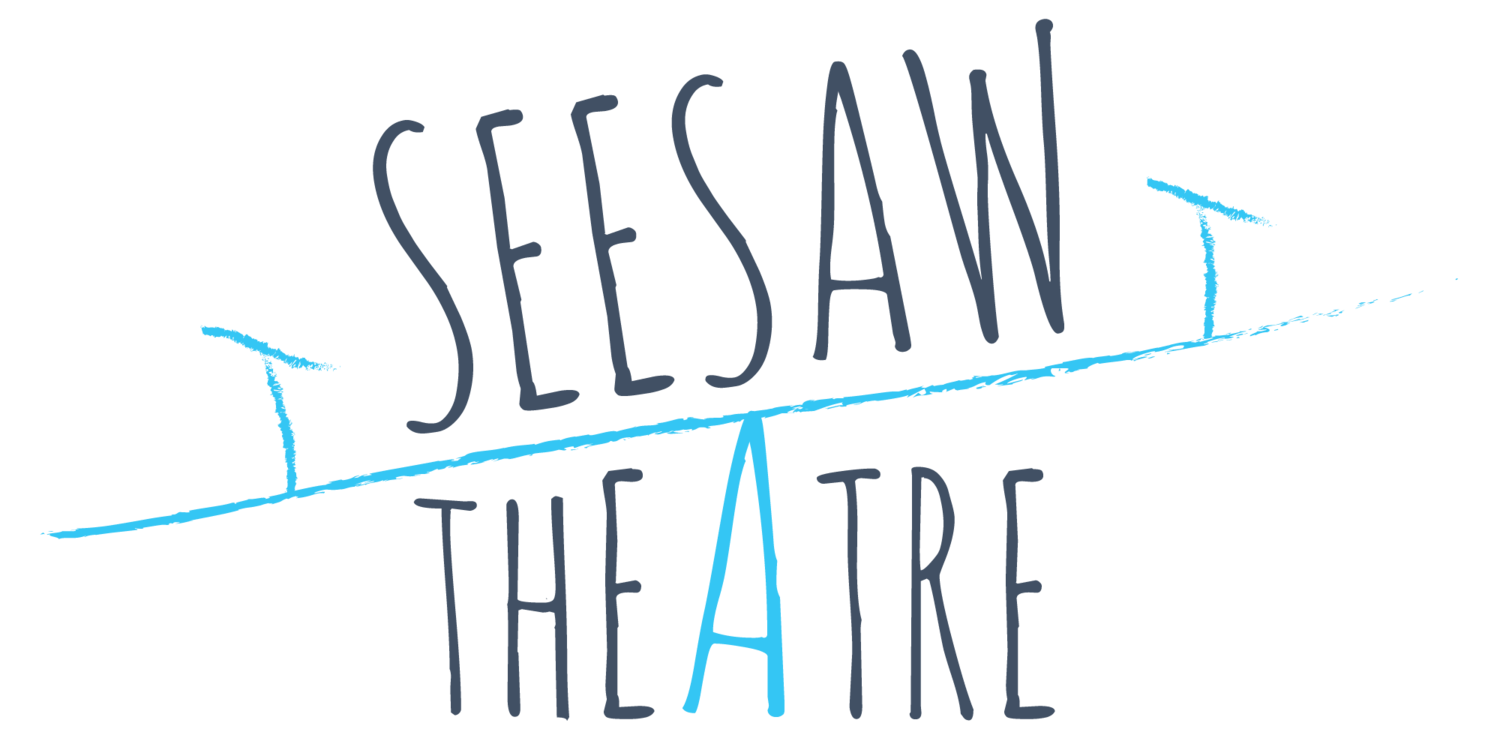Imagine what life would be like if you could not see. How is your world different? What would it be like to interact with the world and those around you? What methods would you have to implement in order do carry out the necessary functions of life? Your hands might now be your eyes guiding you, leading you, speaking to you the stimuli they consume. Instead of reading text, you feel brail. You can’t see faces, but you can feel wrinkles and smiles and tears. The different modes in which you now interact with the world fall under “accessibility.”
The buzzwords around Seesaw and theatre like it are “accessibility” and “inclusivity.” While in the context of our organization they imply generally the same outcome, theatre for all regardless of cognitive ability, they aren’t necessarily the same. In fact I would argue, they aren’t the same at all – an idea I learned from brilliant artists and educators during my summer in D.C. and am still unpacking everyday.
Accessibility is important for all people, of all ages, in all circumstances in life. Accessibility is about ensuring that everyone has a point of entry to whatever it is you are presenting. It is about opening doors that might be shut off for some but not others. Attending a play with cultural and linguistic references different from your own might isolate you. But a preshow handout, for example, can help clarify that world of ideas for you thus making the show more accessible.
In the world of theatre for individuals with cognitive differences, accessibility is an especially hot topic and recent trend, as in the past decade or so. The regional theatres are doing it and even Broadway has taken great strides to make their theatres accessible. Accessible theatre in this sense looks much like any other piece of theatre you might go see but with key changes.
Things might be a little quieter. The lights might be a little softer. The theatre space might not even be completely dark. The audience might be allowed to talk more than what is typically considered to be appropriate. These markers are a part of the “autism-friendly” trend. From the big budget shows to even the smaller regional theatres, setting aside a number of performances specifically for families of children with cognitive differences has become the new craze. Autism-friendly productions give families relief and room to breathe because they are in a space that welcomes them for who they are and validates their experiences. Autism-friendly theatre is certainly noble and bold. But it definitely is not the end.
The next step in the evolutionary phase of this type of theatre is what I have learned to distinguish as inclusive.
Again, you are without your sight. You are at the playground. Other kids can enjoy the playground to its full potential but you find that even with brail markers and additional aid, the playground just isn’t as fun in the same way that it is to the other kids. We can’t do much to change your sight, but we can change the playground. Imagine now that on different levels of the jungle gym there are new smells, textures, or even sounds that bring the structure to life in a unique way that is specifically special to you. Perhaps the textures communicate that you are going up higher or the sounds play as you slither down on the slide. The playground is not just accessible anymore; it is inclusive.
When you’re different, it’s not fun to be reminded that you are different. But that’s often how we treat individuals with cognitive or physical differences. You can’t use the stairs in the wheelchair, so you’re rolled off to the side to ride in the clunky, steel, bumpy wheelchair elevator that feels uninviting and espouses a feeling of separation. Imagine that elevator instead looked like a time machine or played space noises. The isolation is now gone. That sense of difference is what Seesaw eradicates.
Seesaw Theatre is accessible and it is inclusive. It embraces the inherent differences of its audiences and seeks to adapt the theatre structure in a way that invites them to play, imagine, and explore with their full, unchanged hearts and minds. It gives to them experiences that resonate because the experiences are crafted to follow the ebb and flow of their thoughts and desires. The traces you find in autism-friendly theatre that signal to its spectators things are different because they are different are not evident in the work of Seesaw. Seesaw doesn’t alter preexisting work, but completely deconstructs the conventions of theatre and builds them back up to provide a piece of art that at its core is brave, daring, and courageous.
Is autism-friendly theatre bad? No. There is honorable merit in presenting a production of ‘Aladdin’ or ‘The Lion King’ to an autism-audience. Seesaw just happens to pose the question: perhaps there is more? Perhaps we can try to get closer to how a mind with autism understands the world, people, stories, and experiences. Perhaps we need to completely reimagine how we tell stories and what it even means to tell a story to an audience like this. Perhaps we need to not just find a way that we can bring those with autism into our own spaces but also create spaces that exist in this world that are especially for them. Spaces that seek to include them.
Khari Shelton

